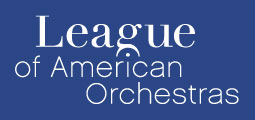The Role of the Orchestra Committee vs. the Local
An interesting musician session at the League’s June conference featured a panel discussing “The Role of the Orchestra Committee and the Local Union.” The panelists were Robert Levine, Principal Violist of the Milwaukee Symphony, Senior Editor at Polyphonic and former Chair of ICSOM; Tom Jöstlein, Associate Principal Horn of the St. Louis Symphony, and Chris Woehr, Assistant Principal Violist of the St. Louis Symphony. We were pleased to have Bill Moriarty, former President of local 802 and former IEB member, join us. (Robert Levine introduced him as “the best AFM president the AFM never had.”)
The duly-elected orchestra committee is an arm of the AFM local, which is the signatory to the CBA (Collective Bargaining Agreement). While the local has a clearly-defined role in labor law, the orchestra committee functions on the roles that tradition and the AFM by-laws give to it.
According to practice and tradition, the local is charged with the duty of fair representation, and the committee, elected by the orchestra, is charged with representing the musicians to management; the local is charged with defending the interests of the individual, while the committee is concerned with the interests of the collective body.
The orchestra committee must notify the local about issues that arise, such as a request to work on a scheduled day off, but the committee should be able to handle it. Issues involving job termination (firing) should go to the local, as the local represents individuals.
The CBA is the governing document for the orchestra. The signatories to the CBA are management and the local, as a point of law. There was pressure from the players conferences (ICSOM, ROPA, and OCSM) that the AFM by-laws address this issue as well, to redress the problem of orchestra musicians being left out of negotiations. Bill Moriarty described how those relationships broke down in St. Louis in 2004-2005, but declared that perhaps it was just a case of the right people not being in place.
It’s important to keep the lines of communication open between the committee and the local. The local can provide valuable legal advice, especially by making their labor attorney available to the negotiating committee (typically in smaller orchestras) and when issues involving contract administration arise.
Workplace issues are covered by law, principally the National Labor Relations Act, the Taft-Hartley Act, and the Landrum-Griffin Act.
The committee’s job is to bring problems to management, not necessarily to critique management.
The first CBA in an orchestra is the hardest one to do. If you’re working on your first governing document, remember that Federal mediators can come in and instruct you on the procedures involved.
You can also pass some issues to your Artistic Advisory committee or your representatives to the board. Not every issue has to go to the local, but they should be informed about issues. And the Local should keep the committee, or at least the committee chair, informed about whatever personnel issues they may be engaged on with management).


No comments yet.
Add your comment